Posted by Elena del Valle on November 30, 2012
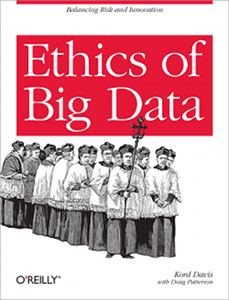
Ethics of Big Data book cover
Photos: O’Reilly Media
Big Data, the gathering of enormous sets of information on individuals, has become part of doing business. Retailers rely on it to offer products their customers have browsed or purchased in the past based on individual profiles and detailed information they keep on their customers activities on and offline in proprietary websites, social media sites and from other sources. In some cases retailers have developed the ability to guess a customer’s interests based on certain behaviors. This was the case earlier this year when it became known that a chain store was able to guess when a customer was likely to be pregnant causing a wave of controversy.
A recent The Washington Post article (Who are the doctors most trusted by doctors? Big data can tell you.) by Ki Mae Heussner explored what doctors think of their peers in a big picture way. According to that article, an activist is examining referral information gathered from government sources through a Freedom of Information Act request and creating a DocGraph designed to outline the relationships between physicians. The graph seeks to chart, relying on Big Data, how doctors interact with each other, refer patients and select doctors for themselves.
In Ethics of Big Data Balancing Risk and Innovation (O’Reilly Media, $19.99) Kord Davis and and Doug Patterson, ask readers about their organization’s policies for gathering and using huge datasets of personal information. In the 82-page softcover book the authors examine Big Data ethical questions and propose to readers that businesses should take into account issues of privacy and identity when making policy decisions about data gathering and storage.
They believe a company’s use of data can directly affect brand quality and revenue. As examples they point to Target, Apple, and Netflix. They suggest companies should align their behaviors with company values in order to preserve the trust of customers, partners, and stakeholders. The book is divided into four chapters: Big Data, Big Impact; Values and Actions; Current Practices; and Aligning Values and Actions
Davis, former principal consultant with Cap Gemini, has spent nearly 20 years providing business strategy, analysis, and technical consulting to 100 organizations including Autotask, Microsoft, Intel, Sisters of Mercy Healthcare, Nike, Bonneville Power Administration (BPA), Northwest Energy Alliance (NEEA), and Bill & Melinda Gates Foundation. Patterson has experience teaching business ethics and as a facilitator of conceptual topics.

Click to by Ethics of Big Data
Comments:
Filed Under: Books
Posted by Elena del Valle on November 16, 2012

Political Public Relations book cover
Photos: Spiro Kiousis, Jesper Stromback
In Political Public Relations: Principles and Applications (Routledge, $49.95), a 338-page softcover book published in 2011 targeting an audience of students and practitioners with an interest in the developing field, fifteen men and three women, many of them in academia, discuss political public relations. The editors of the book, Spiro Kiousis, PhD*, and Jesper Stromback, PhD, believe that although political public relations plays an important role in society little theorizing or research takes place.
They participated in the book project to encourage integrative theory and research to connect public relations, political communication, political science and related fields. Stromback is Lubbe Nordström Professor and chair in Journalism, and professor in Media and Communication at Mid Sweden University, Sundsvall, Sweden. Kiousis is associate professor and chair of the Department of Public Relations, College of Journalism and Communications, University of Florida.
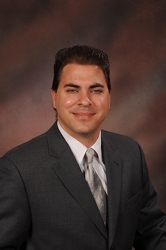
Spiro Kiousis, co-editor, Political Public Relations
“The recent presidential election campaign highlighted the ongoing importance of effective public relations and communication in winning an election. While the temptation to relegate traditional strategies and tactics as obsolete is high, the success of each candidate at different phases of the campaign rested on their ability to use both traditional channels (such as debates) or social media channels (such as YouTube), said Spiro Kiousis, co-editor, Political Public Relations by email.”
The book includes fifteen chapters. The first two chapters define political public relations and identify its roots. The next two are about news management, agenda indexing and building. The next chapters address political campaigning and presidential elections. The remaining chapters discuss corporate issues, political marketing, strategic framing, crisis communication, relationship management, government communication, digital issues, research and future issues as well as diplomacy, foreign relations and global political public relations.
“Oftentimes public relations in politics is misunderstood as being only about spin och news management, but at heart, political public relations is about organizations seeking to establish, build an maintain beneficial relationships and reputations with its key publics to help support its mission and achieve its goals. As such, public relations has always been an intrinsic part of politics and is key to long-term success both when campaigning and governing, and this book highlights both the principles and applications of public relations in politics,” said Stromback by email.

Jesper Stromback, co-editor, Political Public Relations
The book’s definition of political public relations is “the management process by which an organization or individual actor for political purposes, through purposeful communication and action, seeks to influence and to establish, build, and maintain beneficial relationships and reputations with its key publics to help support its mission and achieve its goals.” A book related website, political-public-relations.com, most recently updated September 2012 and run by the editors, extends the conversation beyond the book.
In addition to Kiousis and Stromback, the contributing authors are Paul Baines, PhD, W. Timothy Coombs, PhD, Mathew Eshbough-Soha, PhD, Guy J. Golan, Kirk Hallan, Robert Heath, PhD, Nigel Jackson, John A. Ledingham, PhD, Paul S. Lieber, Darren G. Lilleker, Diana Knott Martinelli, PhD, Juan Carlos Molleda, PhD, Karen Sanders, Kay Sweetser, PhD, John C. Tedesco, PhD, and Damion Waymer, PhD.
*Elena del Valle and Spiro Kiousis serve on the University of Florida Public Relations Advisory Council

Click to buy Political Public Relations
Comments:
Filed Under: Books
Posted by Elena del Valle on November 9, 2012
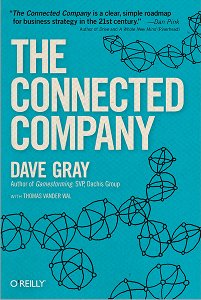
The Connected Company book cover
Photos: O’Reilly Media, Dave Gray photo by Maia Garau, Thomas Vander Wal photo by Matt Balara
Many companies today are divided internally according to function which is fine in a stable environment but in an uncertain environment these companies become brittle, say Dave Gray and Thomas Vander Wal. To overcome uncertain times companies need to sort their organizational structure into Holarchies that function independently forming a Connected Company which they believe is flexible, strong and adapts well to change.
Gray is the author with Vander Wal of The Connected Company (O’Reilly Media, $24.99), a 287-page hardcover book published this year. In it they discuss the changes they see taking over the business environment and how they believe companies need to respond to them. Organizational and management innovation are necessary in order for the essential business model innovation and adaptation required to match today’s fast pace, Alexander Osterwalder proposes in the book’s Foreword.
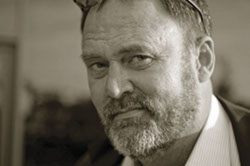
Dave Gray, author, The Connected Company
“The driving principle of the industrial revolution was the division of labor. The driving principle of the next revolution is connection,” said Gray by email in response to a question about who would benefit from reading the book.
Change is essential, the authors say, because customers are embracing disruptive technologies faster than companies are able to adapt. The book is divided into five sections: Why change, What is a connected company, How does a connected company work, How do you lead a connected company, and How do you get there from here.
According to the book, connected companies should be more like organisms than like machines. As such they should learn, have a purpose, obtain feedback from customers, and experiment. They should be made of networked pods with control of their own fate.
Companies that gravitate toward this model will have an advantage, the authors say. To do so they must embrace organic growth, leader driven change, pilot pods and network weaving.
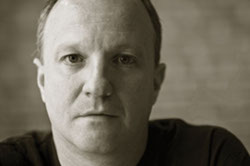
Thomas Vander Wal, contributing author, The Connected Company
Gray, senior vice president of Strategy, Dachis Group, is a management consultant who works with companies to develop and execute winning strategies. His previous book, Gamestorming (O’Reilly), sold more than 50,000 copies and has been translated into 14 languages, according to his bio.
Vander Wal, principal, InfoCloud Solutions, advises companies on social business, digital content, and personal-to-social information. He is on the steering committee of the Web Standards Project, and helped found the Information Architecture Institute, according to his bio.
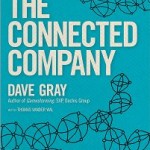
Click to buy The Connected Company
Comments:
Filed Under: Books
Posted by Elena del Valle on October 26, 2012
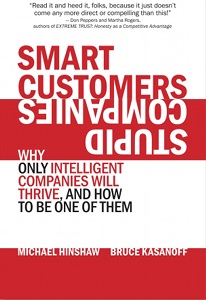
Smart Customers, Stupid Companies book cover
Photos: SmartCustomers.com
In Smart Customers, Stupid Companies why only intelligent companies will thrive, and how to be one of them (Business Strategy Press, $24.95), a book published recently, Michael Hinshaw and Bruce Kasanoff discuss how technology is feeding the needs of smart consumers, requiring companies to stay ahead of market trends to survive.
The 187-page softcover book in color with varied fonts and type sizes is divided into six sections: Smart Customers, Intelligence is Everywhere, A Perfect Storm of Disruptive Innovation, Stupid Companies, Get Smart, and Critical Steps. The project took the authors two years to complete.
The authors believe disruptive forces are affecting business and only companies that respond quickly and efficiently will remain viable in the long term. The four main disruptive forces they describe are: Social Influence, Pervasive Memory, Digital Sensors, and the Physical Web. They believe these forces offer consumers new services, better information, and more choices.

Bruce Kasanoff, coauthor, Smart Customers, Stupid Companies
“Two words: Michael Hinshaw. This was a true collaboration, but Michael was driven to make the book visually arresting, and I was driven to make it strategically impactful. We overlapped, of course, but Michael deserves the most credit for the look and feel,” said Kasanoff by email in response to a question about the color design and layout of the book.
“The book is about innovation vs. inertia. Smart wireless technologies are opening up nearly unlimited opportunities for innovative new services, but many companies are dragging along using the same outdated business models. Michael and I say that one-third of Fortune 500 CEOs are running the next Kodak, but they don’t know it yet,” he said in response to a question about the book and its target audience.

Michael Hinshaw, coauthor, Smart Customers, Stupid Companies
“We wrote the book to let CEOs know that customer experience should be one of their top priorities. Customers have radically greater expectations than even a few years ago, and your company’s future literally depends on your ability to meet or exceed those expectations,” said Hinshaw in response to the same question.
Kasanoff, a blogger at NowPossible.com, has raised $20 million in venture capital and built sales of a new product line to $20 million in three years, according to his bio. Hinshaw, president, Touchpoint Metrics, is also managing director of Mcorp Consulting.

Click to buy Smart Customers, Stupid Companies
Comments:
Filed Under: Books
Posted by Elena del Valle on October 19, 2012

The Pocket Small Business Owner’s Guide to Negotiating book cover
Photos: Allworth Press
Richard Weisgrau makes his living as a photographer. He has done so for decades. When he first started out he didn’t know he could set the terms of his own work. He thought he had to accept the work clients offered him on the conditions they proposed. With time and experience and after seeking the help of colleagues he learned how to negotiate.
This year, he shared his hard earned insights in The Pocket Small Business Owner’s Guide to Negotiating (Allworth Press, $14.95) to empower small business owners to be more confident, successful and profitable. The 181-page softcover book is divided into twelve chapters in which he addresses negotiation, traits of a negotiator, planning for negotiations, preparing mentally, strategies and tactics, contracts, services, purchases, and resolving conflicts.
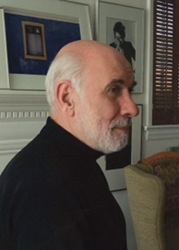
Richard Weisgrau, author, The Pocket Small Business Owner’s Guide to Negotiating
He believes a negotiator should be if nothing else a good listener. He or she should also be self confident, empathetic, inquisitive, patient, communicator, reflective, flexible, fact finder, organized thinker, visualizer, fair minded, good listener, have common sense, option oriented, decision maker, keep commitments, and have assessing and acquiring traits.
Weisgrau was the executive director of the American Society of Media Photographers and prior to that operated a commercial photography studio in Philadelphia.

Click to buy The Pocket Small Business Owner’s Guide to Negotiating
Comments:
Filed Under: Books
Posted by Elena del Valle on October 12, 2012
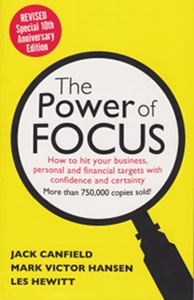
The Power of Focus book cover
Photos: Jack Canfield, Mark Victor Hansen
Ten years ago Jack Canfield, Mark Victor Hansen and Les Hewitt combined their ideas and experiences about finding success in The Power of Focus. Their work, according to promotional materials, has influenced as many 750,000 people around the world.
“True success in life is based on results, not theories. Specific focused action is a lot more important than words,” said Hewitt. In relation to the audience for the book, he responded by email that “this would include business owners, entrepreneurs, managers, salespeople and anyone interested in their own professional and personal growth. Anyone who feels overwhelmed, scattered, always too much to do and never enough time or those who feel guilty because work seems to consume them and family time suffers. The book provides practical solutions for all of these issues.”
The Power of Focus How to hit your business, personal and financial targets with confidence and certainty tenth anniversary edition (Health Communications, Inc., $14.95), a 356-page book published last year, is divided into twelve sections. The three authors offer strategies, techniques and anecdotes they believe based on their experiences will lead readers to success. At the end of each section they included recommended action steps. They are convinced that people who adopt new habits are likely to see a difference in their results. They also included five case studies of successful business people who relied on their strategies on their way to the top.
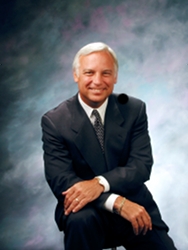
Jack Canfield, co-author, The Power of Focus
“The Power of Focus 10th Anniversary edition is a highly recommended read for those who believe their lives matter, have determination to succeed and have the drive to do whatever it takes to achieve their personal and professional goals. This is a time in our history when clarity, planning and wisdom is necessary to survive,” said Canfield by email in response to the question of who would benefit from reading the book. “This book gives readers these tools to manifest and achieve their biggest goals, sharpening their skills to take on today’s challenges. If your life matters you will read this book and put it to work for you!”

Mark Victor Hansen, co-author, The Power of Focus
Canfield and Hansen are known as the creators of the Chicken Soup for the Soul. Hewitt is a Focus Coach.

Click to buy The Power of Focus Tenth Anniversary Edition
Comments:
Filed Under: Books
Posted by Elena del Valle on October 5, 2012

Rewired book cover
Photo: Camille Preston, Ph.D.
The availability of affordable portable electronics that allow workers to take their office, in part, with them wherever they go has revolutionized business and brought many benefits to companies of all sizes in most parts of the developed world. One of the side effects of electronic connectivity is that it has blurred the lines between personal and work time, and led many people to work outside what were formerly regular office hours.
Because tablets, smartphones, and laptops allow users access twenty-four hours a day year round many people are able to conduct business, respond to queries and urgent issues on the go, while traveling or commuting. It also means they do so past the time they are in their office. Often workers tap their smartphone keyboards, surf the internet, text, Tweet or update their Facebook wall while they speak with a colleague or client, have a phone conversation, attend meetings or conferences, shop and are at dinner with family and friends.
Camille Preston, Ph.D. (see Listen to podcast interview with Camille Preston, Ph.D., CEO, AIM Leadership, about rewiring for results) dedicates her working hours to assisting clients to fine turn their leadership skills. Based on her experience with clients and colleagues and research she has read she believes overuse of technology is stressing people out, producing a near addiction to the connectivity, and, in some cases, causing damage to their bodies and quality of life.
In Rewired How to Work Smarter, Live Better, and Be Purposefully Productive in an Overwired World (AIM Leadership, $12.99), she addresses these concerns and offers ideas for readers who want to seek a healthy balance between their personal and professional lives. She suggests ways for readers to improve important cognitive skills, take advantage of technology without letting it overwhelm them, and deliver results.
The 87-page softcover book published in 2011 is divided into five parts: Overwired, Unwiring, Rewiring for Wellness, Success, and Closing Thoughts. Preston, chief executive officer, AIM Leadership, is a psychologist and leadership coach.

Click to buy Rewired
Comments:
Filed Under: Books
Posted by Elena del Valle on September 21, 2012

The Innovator’s Way book cover
Photos: The MIT Press
Many entrepreneurs may believe innovation, the adoption of change, leads to success. Data do not support that belief: The success rate for innovation initiatives is an unexpectedly low 4 percent, according to Business Week (2005).
Peter J. Denning and Robert Dunham, authors of The Innovator’s Way Essential Practices for Successful Innovation (The MIT Press,$29.95), 434-page hardcover book published in 2010, believe innovation is a personal skill that can be developed and expanded. They are of the opinion that there are innovation regularities that recur and make it possible to learn and practice the skills that foster innovation. They make a distinction between innovation and invention and clarify that invention doesn’t have to preclude innovation.
Denning and Dunham noticed two notable exceptions to the low innovation rate. They are individuals who are “serial innovators” with a higher than 50 percent success rate; and “collaboration networks” made up of volunteer groups with limited managerial oversight such as the internet, the World Wide Web and Linux.
The authors define eight personal practices they believe successful innovators share: sensing, envisioning, offering, adopting, sustaining, executing, leading, and embodying. Weakness in any of these, according to the authors, may lead to lack of innovation.

Peter Denning, co-author, The Innovator’s Way
In their book, divided into 16 chapters and four appendices, they outline the eight practices, how readers may apply them at an individual and group level. Their goal in writing the book is to present to readers an explanation of the way that they can develop a sensibility to innovation and learn the skills it requires through practice.
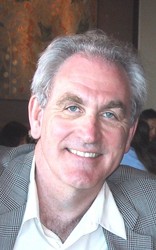
Robert Dunham, co-author, The Innovator’s Way
At the time the book was published, Denning was Distinguished Professor, chair, Computer Science Department, and director, Cebrowski Institute for Information Innovation and Superiority, Naval Postgraduate School in Monterey, California. Dunham founded the Institute for Generative Leadership, and Enterprise Performance, a consulting company.

Click to buy The Innovator’s Way
Comments:
Filed Under: Books
Posted by Elena del Valle on September 14, 2012

The State of Nonprofit America book cover
In The State of Nonprofit America Second Edition edited by Lester Salamon (Brookings Institution Press, $36.95 ), a 708-page softcover book, numerous researchers, analysts and academics examine the state of our country’s nonprofits. To make the publication of the book a reality Salamon partnered with the Aspen Institute’s Nonprofit Sector and Philanthropy Program.
Twenty-nine contributors (in the order in which they appear in the book) wrote the 19 chapters spread out into three main sections: Overview, Major Fields, and Major Challenges. They are: Bradford H. Gray, Mark Schlesinger, Donald M. Stewart, Pearl Rock Kane, Lisa Scruggs, Steven Rathgeb Smith, Stefan Toepler, Margaret J. Wyszomirski, Avis C. Vidal, Carmen Sirianni, Stephanie Sofer, Abby Stoddard, Mark Chaves, Elizabeth T. Boris, Mathew Maronick, Alan J. Abramson, Rachel McCarthy, Leslie Lenkowsky, Eleanor Brown, David Martin, Dennis R. Young, Mary Clark Grinsfelder, Kirsten A. Gronbjerg, Kevin P. Kearns, Atul Dighe, Marla Cornelius, Patrick Corvington, and Pascale Joassart-Marcelli.
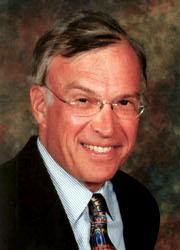
Lester Salamon, editor, The State of Nonprofit America
“The greatest achievement of the second edition of The State of Nonprofit America is to identify four impulses that are shaping the future of America’s nonprofit sector and to assess the future options that face the sector as a consequence,” said Salamon by email.
Although there doesn’t seem to be an official finite number for nonprofits, in part because many are unincorporated and data is scarce, the editor estimates in the book that by the late 2000s there were nearly 2 million organizations divided into four subgroups: service and expressive; social welfare and lobbying; foundations and funders; and religious congregations.
Nonprofits, Salamon states at the beginning of the book, continue to struggle in an environment that emphasizes profits; and the forces of volunteerism, professionalism, civic activism, and commercialism shape the country’s nonprofit sector. Many of the organizations respond with resilience, creativity and resolve; and although most nonprofits are constantly squeezed between their organizational identity and their need to survive the nonprofit sector is robust, according to him. He argues that broader understanding and support are necessary in order to preserve the unique characteristics that make up the individual nonprofit organizations and allow them to thrive in the coming years.
Contrary to what many may believe, relatively few nonprofits represent the needs of minorities or the poor, according to Joassart-Marcelli, assistant professor in the Department of Geography, San Diego State University, and author of the final chapter. He indicates that a disproportionate number of nonprofits serve middle and high income individuals and communities with education, arts, culture, recreation and health amenities.

Click to buy The State of Nonprofit America
Comments:
Filed Under: Books
Posted by Elena del Valle on September 7, 2012

Competency-Based Interviews, Revised Edition book cover
Many times in academic and business situations success hinges on test taking, interview taking and other skills that have little to do with the eventual employment, appointment or other opportunity a candidate applies for in a given situation. Why are some people selected and others with similar credentials rejected? Robin Kessler, a human resources consultant, believes that recognizing change and being able to adapt to it before others do increases the probability of succeeding.
In Competency-Based Interviews, Revised Edition: How to Master the Tough Interview Style Used by the Fortune 500s (Career Press, $14.99), a 223-page softcover book published this year, she discusses her ideas about behavioral interviews targeting relevant competencies.
The author strives to provide prospective interviewees an edge in an interview by helping them understand how human resources professionals approach interviewing and hiring, and anticipating what an interviewer may seek; recognizing the changes in interviewing that are being implemented at sophisticated organizations; pointing out to the decision makers how the interviewees competencies match their needs; and developing a plan to drive top performance during interviews.
In the 16-chapter book, she stresses the importance of thinking strategically. Three first steps she points out are to discover what it takes to win, doing the things required to win and being aware that what it takes to win may change. At the end of each chapter she summarizes the essence of the chapter in a question and answer format.
Kessler, president, The Interview Coach, a Texas based career consulting and human resources company, has 20 years of experience. She is author of Competency-Based Performance Reviews and co-author of Competency-Based Resumes.
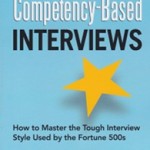
Click to buy Competency-Based Interviews, Revised Edition
Comments:
Filed Under: Books









































